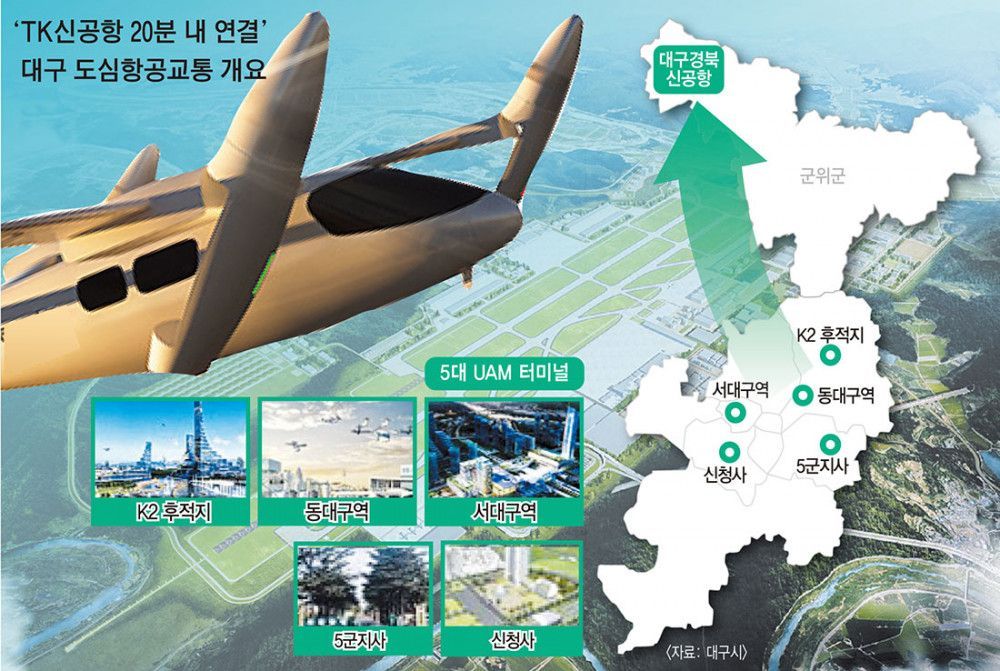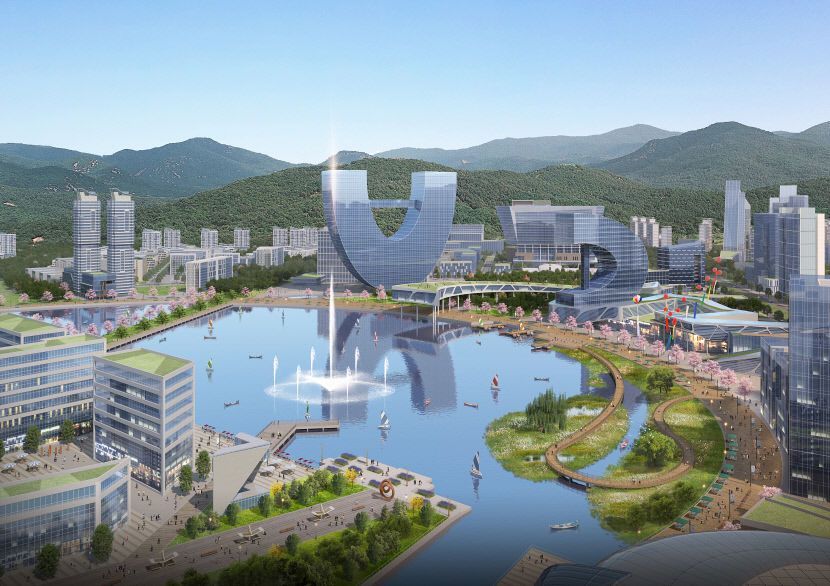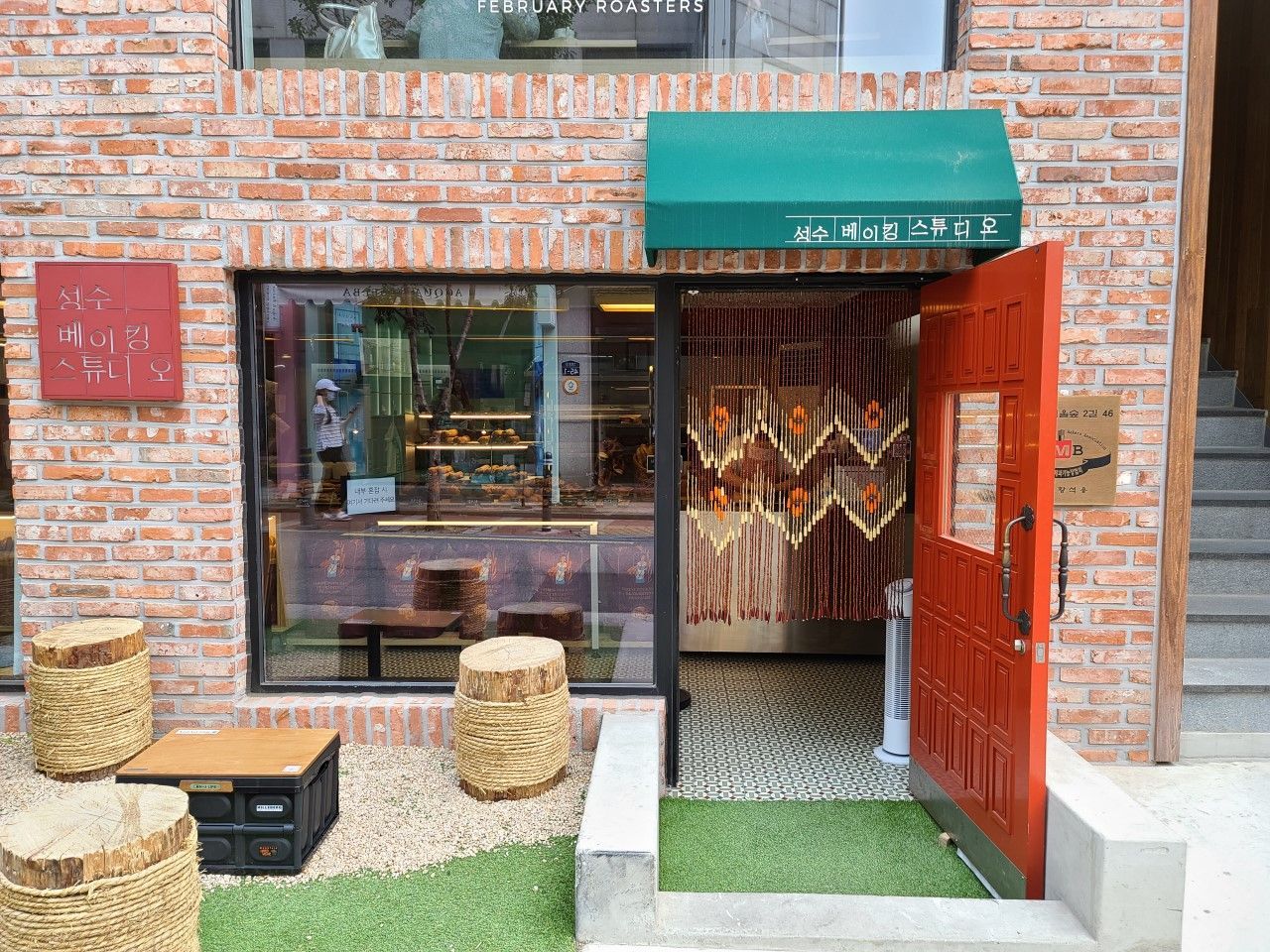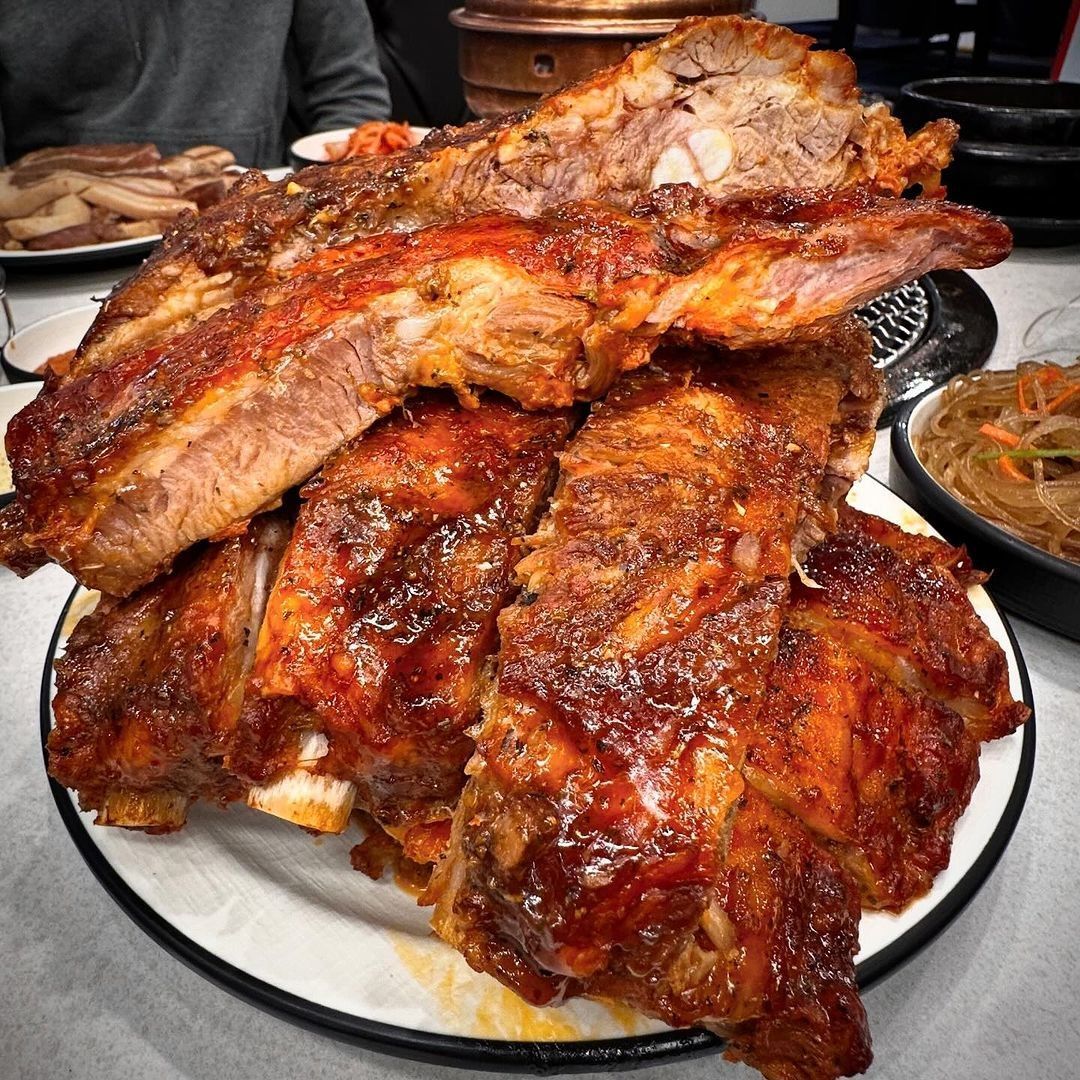The Relocation of Daegu Airport to Gunwi: A Comprehensive Guide for Expats, Tourists, and USFK Personnel
South Korea is about to kick off an ambitious project to relocate the Daegu International Airport and the adjacent military air base to a new site in Gunwi County, North Gyeongsang Province. This massive undertaking, set to be completed by 2030, will have significant implications for the region's development, transportation infrastructure, and the daily lives of local residents, expats, tourists, and USFK personnel stationed in the area.

The New Daegu-Gunwi Airport
Here is what we know:
- Location: The new airport will be situated on the boundary of Uiseong County and Gunwi County in North Gyeongsang Province, specifically in the Sobo-myeon area of Gunwi County.
- Size: The airport site will cover approximately 3.3 square kilometers (1 million pyeong).
- Project Cost: The total project is estimated at 14.1 trillion won ($10.7 billion), with 11.5 trillion won allocated for the military airport and 2.6 trillion won for the civilian airport.
- Timeline: Construction is set to begin in 2025, with the airport scheduled to open in 2030.
- Capacity: The new airport will be 2.3 times larger than the current setup, featuring a runway over 3.5 km long and capable of handling medium to long-haul international flights.
- Passenger Terminal: The international flight terminal is expected to accommodate ten million passengers annually.
Integrated Development Plan
The airport relocation is part of a larger redevelopment initiative for the Gunwi-gun area. The comprehensive plan includes:
- Expanding the total development area from 13 square kilometers to 93 square kilometers.
- Creating an industrial complex covering up to 30.7 square kilometers, focusing on cutting-edge industries such as semiconductors, future vehicles, urban air mobility (UAM), hydrogen, eco-friendly materials, and future textiles.
- Developing residential areas, cultural and tourism facilities, and essential infrastructure like water treatment plants, waste management facilities, and energy complexes.
Timeline and Key Milestones
Here's how it's all supposed to unfold:
- 2023: Wrapping up the research services and basic planning.
- 2024-2025: Design work.
- 2025: Construction begins.
- 2025-2029: Main construction period.
- 2030: Scheduled opening of the new Daegu-Gunwi Airport.
How This Will Affect Various Stakeholders
For expats and long-term residents in the Daegu area, the airport relocation will bring both challenges and opportunities:
1.
Improved International Connectivity:
The new airport's capacity for medium to long-haul flights will enhance direct international travel options from the region.
2. Potential Property Value Changes: Areas near the new airport may see increased property values and development, while those near the current airport might experience changes in the local real estate market.
3. Job Opportunities: The large-scale development project is expected to create numerous jobs in construction, aviation, and related industries.
4. Temporary Inconvenience: During the transition period, there may be some disruptions to air travel and local transportation networks.
5. New Urban Developments: The project includes plans for new residential areas and cultural facilities, potentially offering improved living conditions and amenities for expats.
Transportation and Connectivity
One of the most significant aspects of the new airport project is its integration with regional transportation networks:
High-Speed Rail Connection

A high-speed rail line will connect Seodaegu Station, the new airport, and Uiseong. But some other rail solutions are being considered:
- Daegu-Gyeongbuk Line: The proposed GTX-grade double-track railway will connect Seodaegu Station to Uiseong Station. It was included in the 4th National Railway Network Construction Plan in 2021 and selected for a preliminary feasibility study on May 2, 2024. If it passes the feasibility study, it is expected to open in 2032, providing a direct rail link between Dongdaegu Station to Seodaegu and Uiseong Station, serving the new airport. Travel time from Daegu to the new airport is expected to be around 30 minutes and will have a few stops in between.
- Integrated Rail Line for the Air Force Base: A dedicated rail line for the Air Force base at the new airport has been confirmed as part of the military airport relocation project.
- Local Government Proposals:
- Central Line: There is a proposal to operate a circular metropolitan railway connecting the Daegu-Gyeongbuk Line with the Central Line and the Daegu metropolitan area.
- Gimcheon-New Airport-Uiseong Rail Line: This proposal involves constructing a new line from Gumi Station to the new airport, then operating passenger trains between Gimcheon and Uiseong.
- Uiseong-Yeongdeok Line: Another proposal suggests building a new line between Uiseong Station and Yeongdeok Station, facilitating passenger train operations between the new airport and Yeongdeok.
Road Infrastructure
The new airport will be well-connected by road, with several existing and planned routes:
- Existing Highways:
- The Jungang Expressway's Uiseong IC and Sangju-Yeongcheon Expressway's West Gunwi IC are within a 6km radius of the airport.
- The Seosan-Yeongdeok Expressway's West Uiseong IC is about 15km to the northwest.
- Confirmed Construction Plans:
- Jungang Expressway Connection: A new Airport IC will be built south of the Gunwi Rest Area, with a 6.6km road connecting directly to the passenger terminal.
- National Road 28 Connection: A 4.6km access road from the passenger terminal to National Road 28 near Doam Bridge.
- Provincial Road 68 Connection: An access road from the Air Force facilities within the new airport to Provincial Road 68.
- Projects Under Feasibility Study:
- Daegu-Seongju Expressway
- Ministry of Land, Infrastructure and Transport Plans:
- Expansion of Jungang Expressway: The section from Dongmyeongdongho JC to Gunwi JC will be expanded to reduce traffic congestion.
- Gumi-Gunwi Expressway: Currently under preliminary feasibility study.
- Local Government Proposals:
- Palgongsan Mountain Tunnel Highway
- Gunwi Bypass Road: A 25km, 625 billion won project connecting East Gunwi IC to the airport.
- Gyeongbuk Provincial Government New City to New Airport Road: A 35km, 4-lane road project to connect the new airport with the provincial government complex, potentially reducing travel time to about 30 minutes.
Urban Air Mobility (UAM)
Urban Air Mobility is an emerging concept that uses small, highly automated aircraft to transport passengers or cargo at lower altitudes in urban and suburban areas. These aircraft, often electric vertical takeoff and landing (eVTOL) vehicles, can take off and land vertically, making them ideal for congested urban environments. UAM aims to alleviate ground traffic congestion and provide a fast, efficient alternative for urban transportation.
A groundbreaking UAM system is planned to connect the new Daegu-Gyeongbuk Airport with Daegu's city center. This futuristic mode of transport promises to reduce travel time between the city and the airport to approximately 20 minutes.

Key points about the UAM system:
- Phased Implementation:
- The first UAM landing pad (vertiport) is scheduled to be operational at Dongdaegu Station by 2028.
- By 2030, four additional landing sites are planned within Daegu, including K2's former site, the new city hall, Seodaegu Station, and the 5th Logistics Command of the ROK Army.
- From 2035, the network is expected to expand to other cities including Pohang, Gyeongju, and Ulsan.
- Long-term plans include possible vertiports at Hakjeong District, Technopolis, Camp George, and Suseong Lake.
- Partnerships and Development:
- In October 2022, Daegu Mayor Hong Joon-pyo signed agreements with Hanwha Systems, SKT, Korea Airports Corporation, and T Map Mobility to form the K-UAM consortium. This consortium aims to develop the UAM ecosystem and prepare for joint commercialization.
- Cargo Drones:
- Daegu has also partnered with Bell Textron, a U.S. aerospace company, to operate logistics-only drones from 2024.
- Integration with Other Transportation Modes:
- The new airport is designed to be the first international airport with "inter-modal connectivity" built-in from the planning stage, integrating long-distance international routes with UAM, cargo drones, and autonomous vehicles.
- Timeline:
- Full commercialization of UAM is expected by 2030, following completion of safety verifications.

This innovative UAM system will complement the traditional transportation infrastructure, offering a fast and futuristic option for travel between Daegu city center and the new airport. For expats, tourists, and USFK personnel, this could provide a unique and efficient way to access the airport, significantly reducing travel times and offering a glimpse into the future of urban transportation.
Future Development Plans for the Current Daegu and Military Airports
With the relocation of Daegu International Airport and the K-2 military air base to Gunwi and Uiseong, significant redevelopment plans are in place for the current airport sites. These plans aim to transform the areas into hubs for high-tech industries, residential developments, and other modern infrastructure.
Key Developments
- High-Tech Industry Hub
- Innovation and Technology: The current Daegu International Airport site will be redeveloped into a center for high-tech industries. This includes sectors such as robotics, artificial intelligence, and future mobility.
- Residential and Mixed-Use Development
- Sky City: A futuristic residential and industrial area named "Sky City" will be developed near the new airport site. This area will accommodate around 250,000 residents and will include advanced housing, educational, and cultural facilities.
- Sustainable Infrastructure: The new residential areas will emphasize sustainability, using recirculated water and steam heat as energy sources. There will also be a focus on new transportation methods, such as UAM and autonomous driving.

The relocation of Daegu Airport to Gunwi represents a significant milestone in South Korea's regional development and transportation infrastructure. While the project presents challenges, it also offers exciting opportunities for economic growth, improved connectivity, and enhanced quality of life for residents and visitors alike.
As the project progresses over the next few years, it will be crucial for all stakeholders – from local residents and expats to tourists and USFK personnel – to stay informed and adaptable. The new Daegu-Gunwi Airport has the potential to transform the region, opening up new possibilities for travel, business, and cultural exchange.









